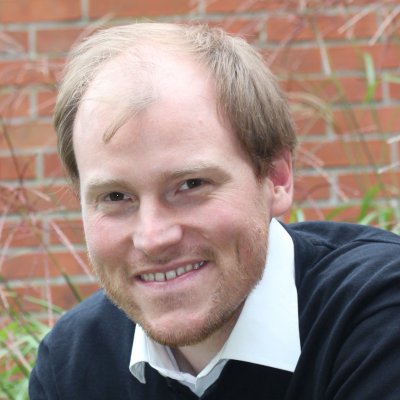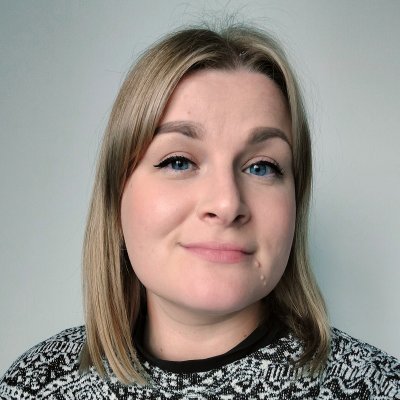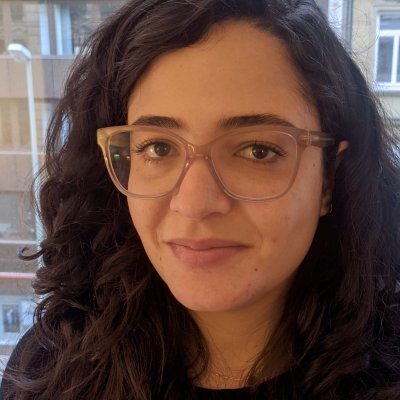16.04.2024 — Within the Martini Force Field Initiative, we developed and extensively tested an enhanced GōMartini model in large collaborative consortium led by Paulo C. T. Souza and Sebastian. The work demonstrates the capabilities of the GōMartini 3 model for test cases ranging from protein-membrane and protein-ligand binding to single molecule force spectroscopy. Moreover, it can be used to address inaccuracies in the Martini 3 protein model. The long-awaited preprint entitled "GōMartini 3: From large conformational changes in proteins to environmental bias corrections" is out now!
05.04.2024 — Sebastian attended the CECAM flagship workshop on frontiers of coarse-grained models in Lyon this week. In his talk, Sebastian presented developments and applications of the Martini 3 protein model and light-switchable molecules. Thanks to Paulo C. T. Souza and the other organizers for putting together such a nice program!
24.03.2024 — G protein-coupled receptors are an important class of cell receptors which reside in the membrane. Using coarse-grained molecular dynamics simulations, we showed that they can also facilitate membrane crossing of drug molecules. Our results are now available in a preprint entitled "GPCR surface creates a favorable pathway for membrane permeation of drug molecules".
15.03.2024 — In the last two days, the Scientific Advisory Board visited the FIAS to get an overview of the diverse research activities at FIAS. Cristina, Saara, and Thilo presented the projects of the Thallmair Group with much commitment!
12.03.2024 — Today, Sebastian gave a talk entitled "Unraveling protein function and dysfunction by means of coarse-grained molecular dynamics" at the Max Planck Institute for Polymer Research in Mainz. It was great meeting old friends and making new connections! Thanks for the invitation and the exciting discussions!
07.03.2024 — In the FIAS Forum Lecture Series, FIAS Fellows present current scientific topics to a broader audience. Tonight, Sebastian will give a talk (in German) entitled "Wie Lichtschalter in Medikamenten der Zukunft eingesetzt werden können". Last-minute participants can find more information in the announcement.
09.02.2024 — Cristina will attend this year's Biophysical Society Meeting in Philadelphia (PA, US), where she will present a poster entitled "Exploring Lipid and Ligand Flip-Flop on the Surface of a GPCR: A Martini 3 Study".
02.02.2024 — We are glad that the SCALE Initiative is invited to submit a full proposal within the Excellence Initiative! Sebastian contributes to the proposal as an associated PI. Congratulations to all collaborators!
01.01.2024 — The Thallmair Group wishes a Happy New Year and looks forward to great collaborations, exciting research results, and interesting conferences!
05.12.2023 — Sebastian visited the University of Münster for two days. Today, he gave a talk in the Plant Biology Colloquium entitled "Modeling protein-lipid interactions: From LHCII lipid fingerprints to specific lipid binding sites". Thanks a lot for the invitation and the exciting discussions!
31.10.2023 — We have to say goodbye to Marieli Goncalves Dias today. After spending one year as guest PhD candidate in the Thallmair Group, she goes back to the University of Campinas (Brasil). It was great having Marieli in our group! We wish you all the best, Marieli!
05.10.2023 — Cholesterol is a key component of cell membranes and thus an important molecule in biomolecular simulations. Our paper about the development and validation of the cholesterol model for the coarse-grained Martini 3 force field was accepted in the Journal of Chemical Theory and Computation. It is entitled "Martini 3 Coarse-Grained Force Field for Cholesterol".
01.10.2023 — We cordially welcome Saara Lautala and Thilo Duve in the Thallmair Group! Saara will work as postdoctoral researcher on membrane contact sites within the SCALE initiative in close collaboration with the group of Florian Wilfling (MPI of Biophysics). Thilo will study light-switchable kinase inhibitors in his Master thesis.
03.08.2023 — This week, our PhD students Cristina and Marieli attend the EBSA congress in Stockholm, Sweden. Each of them presents a poster with their results about G-protein coupled receptors and nuclear receptors, respectively.
24.07.2023 — In collaboration with researchers at Philipps-University Marburg, we were able to show that the Tubby protein localizes to contact sites between endoplasmic reticulum and plasma membrane. It binds to specific lipids as well as to a protein, which only occurs in the contact sites. You can read more about it in our publication entitled "Localization of the tubby domain, a PI(4,5)P2 biosensor, to E-Syt3-rich ER-PM junctions" in the Journal of Cell Science.
17.07.2023 — Cristina will present her research results at the CMMS-Retreat, which takes place at the Rursee in the Eifel mountain region from 17.-21.07.2023. In addition, Sebastian will give an introduction to coarse-grained molecular dynamics simulations.
13.07.2023 — The FIAS-News article entitled "Sensor enables analysis of an important cellular scavenger" tells you more about the novel sensor for glutathione, which we published in Nature Chemistry recently.
11.07.2023 — Today, Sebastian Thallmair presents a keynote lecture entitled "Protein-lipid Interactions Resolved by Coarse-grained Molecular Dynamics" at the "10th European Symposium on Plant Lipids" in Amsterdam, the Netherlands. Thanks a lot to Teun Munnik (University of Amsterdam), the organization committee, and the Deutsche Gesellschaft für Fettwissenschaft e.V. for the invitation to the exciting conference!
16.06.2023 — Glutathione plays an important role in cells: it regulates the cellular redox potential and is involved in signalling processes. Together with researchers from the University of Zurich, we developed and characterized a quantitative sensor for glutathione. It can be applied selectively in cellular substructures, so-called organelles. Our results are now published in Nature Chemistry entitled "A Locally Activatable Sensor for Robust Quantification of Organellar Glutathione".
31.05.2023 — For the first time, the "Best FIGSS Talk" Prize was awarded to speakers of the FIGSS Seminar in the winter semester 2022/2023. The prize was initiated by Doris Hardt and Sebastian Thallmair. In the framework of the graduate school FIGSS at FIAS, doctoral students present their research in the biweekly FIGSS Seminar. Since summer semester 2022, Sebastian is Scientific Coordinator of the graduate school FIGSS.
30.05.2023 — In an international collaboration with researchers in Portugal, France, the Netherlands, Germany, Canada, and the US, we developed and validated a Martini 3 model for cholesterol. Cholesterol is a key component of biological cell membranes and thus an important molecule in biomolecular simulations. You can read more about the Martini 3 cholesterol model in our new preprint.
03.05.2023 — Together with the group of Dr. Roberto Covino, we presented our research to the Alfons und Gertrud Kassel Stiftung, the Dr. Rolf M. Schwiete Stiftung, and the Johanna Quandt Stiftung, which support our research projects. The event was entitled "Biomolecular function unraveled by the computational microscope". In addition to talks by Cristina and Sebastian, Marieli and Charlie presented posters with their results. We would like to thank the foundations for their generous support!
13.04.2023 — We are happy to welcome Dr. Paulo C. T. Souza (CNRS Lyon, France) in the first CMMS seminar of the summer semester 2023. In his talk entitled "On the road to biomolecular design with the Martini coarse-grained model" he provided an overview of the Martini 3 force field and showed its applications in drug design and drug delivery.
27.03.2023 — We cordially welcome David Grantz and Charlie Müller in the Thallmair Group! David does his PhD thesis in the lab of Ben Feringa and Wiktor Szymanski at the University of Groningen (The Netherlands). In the next two weeks he will work on docking of light-switchable antibiotics. Charlie studies Biophysis at the Goethe University Frankfurt. Duing his Bachelor thesis in the Thallmair Group, he will work on light-switchable lipids.
13.03.2023 — In the coming one and a half weeks, Sebastian will teach the lecture "Introduction to Biomolecular Simulations" together with Dr. Roberto Covino (FIAS) and Dr. Maziar Heidari (MPI for Biophysics) at Goethe University.
20.02.2023 — Our article describing the optimized Martini 2 cholesterol model entitled "Optimal Bond Constraint Topology for Molecular Dynamics Simulations of Cholesterol" appeared in the Journal of Chemical Theory and Computation. We also describe a program to diagnose problematic molecular force field topologies which lead to non-physical temperature gradients in molecular dynamics simulations. Thanks a lot for the great collaboration, Balázs Fábián and Gerhard Hummer!
02.02.2023 — We offer an interdisciplinary postdoc position to investigate membrane contact sites combining cryo-electron microscopy and molecular modelling. The position is in collaboration with the group of Florian Wilfling at the Max Planck Institute of Biophysics. You can find more details and a link to submit your application here.
30.01.2023 — Curious how to set up your Martini 3 protein model to study protein-ligand binding? We provide many details in our new book chapter entitled "Practical Introduction to Martini 3 and its Application to Protein-Ligand Binding Simulations". Congratulations Cristina and thanks to all co-authors!
01.01.2023 — The Thallmair Group wishes a Happy New Year and looks forward to great collaborations, exciting research results, and interesting conferences!
19.12.2022 — We are excited that our publication "Protein-ligand binding with the coarse-grained Martini model" is part of the collection "Molecular dynamics simulations and computational methods in life science" by Nature Communications.
16.12.2022 — Yesterday, the "2nd Molecular Modeling and Simulation Workshop" was hosted at FIAS in the framework of CMMS. In addition to the keynote lecture by Prof. Ahmad Reza Mehdipour, PhD students and postdocs of research groups in the Rhine-Main area presented their research. Cristina and Marieli presented their work as well.
14.11.2022 — Last week, Cristina and Sebastian spent three days at the "2nd Martini Developers Meeting" on Malta. They had an intense exchange with the core development groups about current and future developments of the coarse-grained Martini force field.
03.11.2022 — Welcome Marieli Goncalves Dias! Marieli is a PhD student at the University of Campinas and the Brazilian National Biosciences Laboratory in Campinas, Brazil. She will spend one year in the Thallmair group to perform molecular dynamics simulations of nuclear receptors.
20.10.2022 — We developed an optimal description of cholesterol in the coarse-grained Martini force field. This prevents artificial temperature gradients in simulations of biological membranes. Together with colleagues at the CMMS and the MPI for Biophysics, we summarized our results in a preprint.
04.10.2022 — Our publication about photoswitchable cross-linkers was highlighted in an article in ChemistryViews entitled "Light-Responsive Linkers for the Control of Biomolecules".
08.09.2022 — The Tubby protein plays an important role for cellular communication. In collaboration with scientists from Marburg and Groningen, we were able to identify a previously unknown, second binding site for the signalling lipid PI(4,5)P2. It substantially increases the sensitivity of Tubby for the signalling lipid. You can find more details in this FIAS News article as well as in our Science Advances publication entitled "Two cooperative binding sites sensitize PI(4,5)P2 recognition by the tubby domain".
03.09.2022 — Photoswitchable cross-linkers are able to bind to biomolecules at two positions. Then, they can modulate the function of the biomolecules by means of light. Together with researchers of the University of Groningen, we developed and characterized such cross-linkers with improved water solubility. The results are now published entitled "Photoswitchable, water-soluble bis-azobenzene cross-linkers with enhanced properties for biological applications" in the journal ChemPhotoChem.
24.06.2022 — Our article on the frequency of crashes in molecular dynamics simulations entitled "Small ionic radii limit time step in Martini 3 molecular dynamics simulations" is now published in The Journal of Chemical Physics. In collaboration with researchers in CMMS and the MPI for Biophysics we developed solutions to enable larger time steps in Martini 3 simulations and thus to increase their efficiency. Thanks a lot for the nice collaboration, Balázs Fábián and Gerhard Hummer!
09.05.2022 — Last week, Cristina gave a talk entitled "Coarse-grained modeling of salbutamol and salmeterol binding to β2-adrenergic receptor" in the PhD student edition of the BioExcel webinar series. In case you missed Cristina's talk, have a look at the recording available at the BioExcel website.
13.04.2022 — Too large time steps in molecular dynamics simulations result in regular crashes of a simulation. We developed a statistical model for the frequency of these crashes together with colleagues at the CMMS and the MPI for Biophysics. The model as well as an analysis of crashes in simulations with the coarse-grained force field Martini 3 are summarized in our preprint.
11.04.2022 — Glutathione is responsible for the cellular redox potential and involved in cellular signaling pathways. In collaboration with researchers from Switzerland, we developed and characterized a quantitative sensor for glutathione. We show in our preprint that the sensor can be used in whole cells as well as in specific organells to determine the amount of glutathione.
01.04.2022 — Cristina was awarded a poster prize at the virtual school "BioExcel School on Biomolecular Simulations" for her poster "Coarse-grained modeling of salbutamol and salmeterol binding to β2-adrenergic receptor"! Now, she will present her research results in a talk during a BioExcel webinar on May 3rd. Congratulations, Cristina!
01.04.2022 — In collaboration with researchers of the University of Groningen, we wrote a perspective article about catalysis-induced motion of enzymes and its potential impact on cellular metabolism. You can read more about it in our publication entitled "Perspective: A stirring role for metabolism in cells" published in Molecular Systems Biology.
08.03.2022 — The development of light-switchable drugs is particularly challenging, because it combines elements of medicinal chemistry and photochemistry. Together with researchers from the Netherlands and Germany, we show in our publication in the Journal of Medicinal Chemistry how computational methods successfully contributed to design light-switchable inhibitors for a bacterial enzyme.
03.01.2022 — At high-light conditions, photosynthetic organisms have to protect themselves against too much light energy. In collaboration with scientists from the Netherlands and Italy we discovered that the protein structure and lipid affinity changes during a known regulatory mechanism. You can read more about the NMR experiments and coarse-grained MD simulations in our recent publication in Biophysical Journal.
01.01.2022 — The Thallmair Group wishes a Happy New Year!










